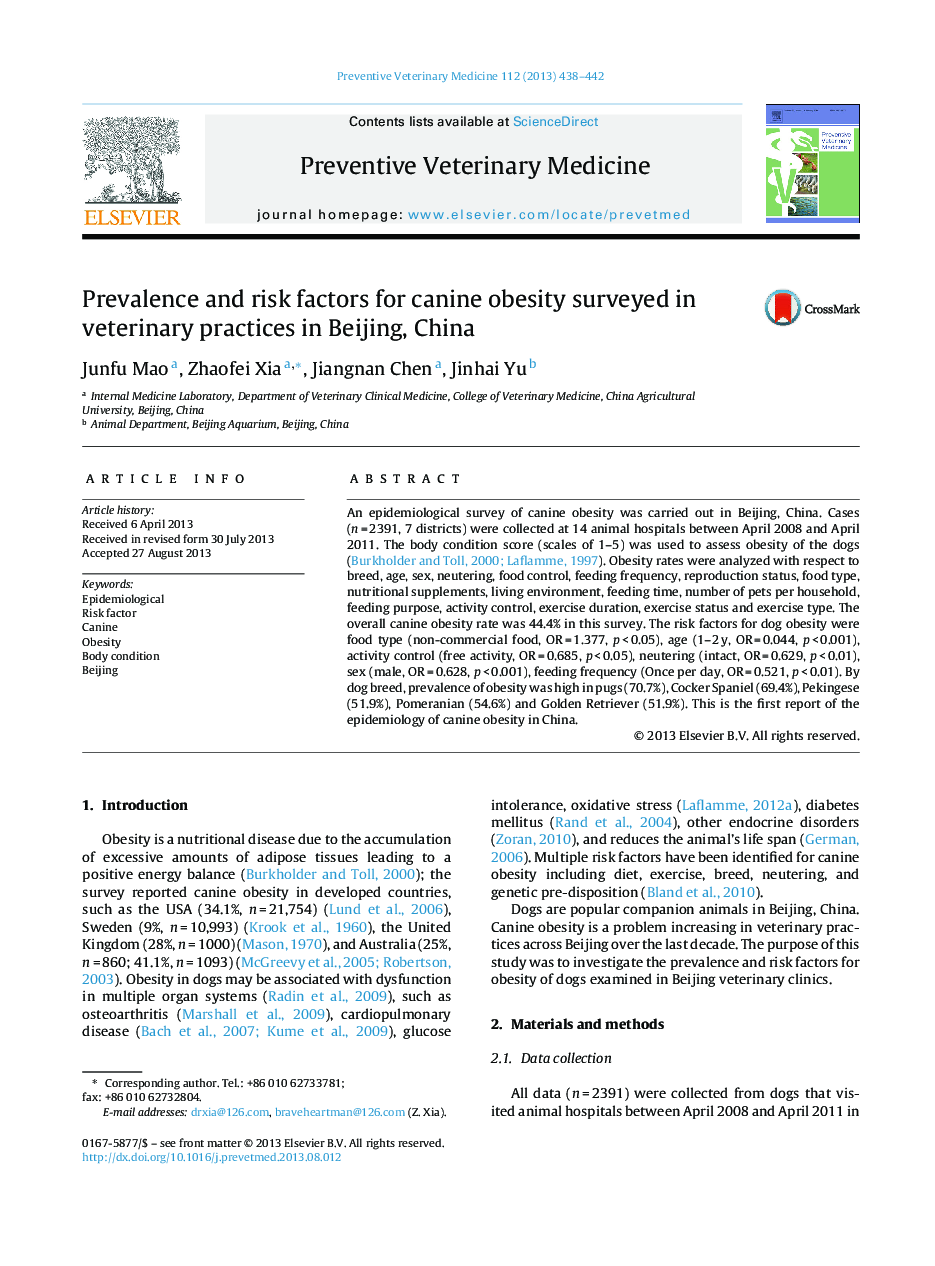| کد مقاله | کد نشریه | سال انتشار | مقاله انگلیسی | نسخه تمام متن |
|---|---|---|---|---|
| 5793660 | 1554178 | 2013 | 5 صفحه PDF | دانلود رایگان |
An epidemiological survey of canine obesity was carried out in Beijing, China. Cases (n = 2391, 7 districts) were collected at 14 animal hospitals between April 2008 and April 2011. The body condition score (scales of 1-5) was used to assess obesity of the dogs (Burkholder and Toll, 2000; Laflamme, 1997). Obesity rates were analyzed with respect to breed, age, sex, neutering, food control, feeding frequency, reproduction status, food type, nutritional supplements, living environment, feeding time, number of pets per household, feeding purpose, activity control, exercise duration, exercise status and exercise type. The overall canine obesity rate was 44.4% in this survey. The risk factors for dog obesity were food type (non-commercial food, OR = 1.377, p < 0.05), age (1-2 y, OR = 0.044, p < 0.001), activity control (free activity, OR = 0.685, p < 0.05), neutering (intact, OR = 0.629, p < 0.01), sex (male, OR = 0.628, p < 0.001), feeding frequency (Once per day, OR = 0.521, p < 0.01). By dog breed, prevalence of obesity was high in pugs (70.7%), Cocker Spaniel (69.4%), Pekingese (51.9%), Pomeranian (54.6%) and Golden Retriever (51.9%). This is the first report of the epidemiology of canine obesity in China.
Journal: Preventive Veterinary Medicine - Volume 112, Issues 3â4, 1 November 2013, Pages 438-442
